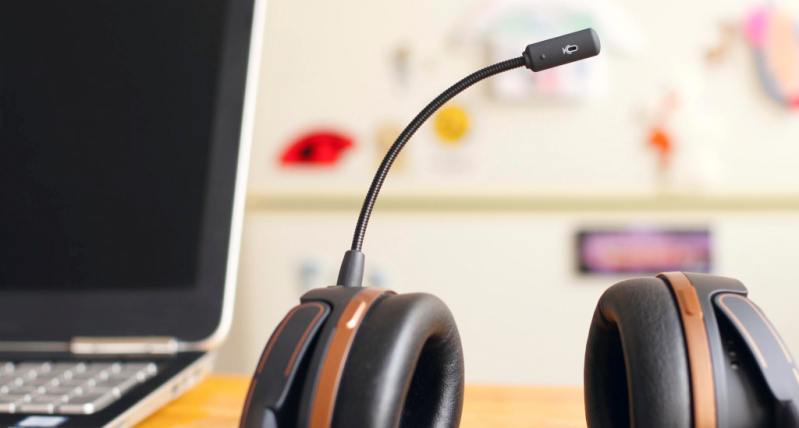The future of the contact centre post Covid-19 – Coronavirus has forced unprecedented change upon the contact centre, testing every prior technology decision and tool in every organisations’ portfolio.

As conversations start to turn to life post Covid-19, we are being prompted to ask ourselves – both personally and commercially – what parts of ‘normal’ do we want to get back to? Will we see a return to business as usual with masses rushing back into the office or will this pandemic completely change the face of the industry and give rise to the virtual contact centre?
While every business is unique and there are many aspects to examine, there are three core areas in particular to consider: people (the driving force within the contact centre), process (the things that keep everything ticking), and finally technology (the tools that make such visions a reality).
People
Our assumption is that, in the short term, most contact centre staff will be eager to return to the office, their colleagues, and some degree of normality. The contact centre is a unique working environment with a carefully established culture within its four walls. Teams are used to working to shared goals, exchanging experiences of challenging customer service interactions and motivating each other onto the next call. A more virtualised or devolved contact centre risks losing this.
However, there is no doubt that others have embraced the opportunity for greater flexibility, in fact thrived in it, and would welcome the opportunity for this to continue long term.
In addition, a previously underutilised demographic of call centre worker has unexpectedly emerged from this process. This includes workers who could be retired, or maybe a stay-at-home parent – all of whom have a solid work ethic, are more mature than the typical profile of a contact centre employee and therefore require less supervision. This makes them an ideal candidate to reliably continue remote working with success, removing perhaps some of the perceived barriers to initiating a general working from home policy.
There is a further benefit to a more flexible workforce. As businesses start to reopen, contact centres may see an increase in calls, with customers searching for the human touch that has been missing in lockdown. Building in flexibility within your contact centres through mobilising teams working from home can provide additional support – ensuring inquiries are dealt with and customer experience levels are maintained in good time.
There is no doubt that the current climate has forced contact centres to overcome some of the hurdles traditionally associated with working from home, and this will only likely pave the way for greater flexibility in the future – perhaps moving towards the advent of more hybrid operating models that embrace the benefits of working in the office, whilst mobilising a dedicated working from home team to provide additional support when needed. However, it is essential that the right processes and technology are in place to enable this vision to materialise successfully.
Processes
If we are to presume that we will see a hybrid contact centre in the future, then it is critical that adequate processes are set up to provide a seamless experience across the two models. Some contact centres are traditionally used to a ‘closer’ management approach which will have been extensively tested within a devolved workforce. Some processes may have had to be cobbled together to meet short-term needs; however, these must be re-evaluated when looking towards the future. Indeed, consideration must be paid to any potential changes to management style, training delivery and ensuring quality service continues – irrespective of the environment it is delivered in.
Technology already exists that will provide the data and insight into the workings of employees. Tools like call monitoring, speech analytics and customer sentiment tracking will provide management with the data needed to have a broad view of operations, enabling targeted action to be taken on key areas that need attention. Organisations will also need to review their operating models and associated processes in light of evolving customer behaviours and other ripple effects as a result of the coronavirus pandemic. They will need to ensure that any operational or process-driven changes they make will support these evolutions. For example, if a contact centre becomes more hybrid, it should make sure that a centralised management hub is in place in order to control the flow of information and ensure that teams – whether working in the office or remotely – have access to all the information and systems that they need.
Maintaining the culture of the contact centre within a hybrid model must also be discussed – ensuring that any devolved workforce is wholly aligned with the company vision and feels engaged with the wider workforce. The implementation of video will assist with this – connecting employees, through technology widely used by consumers. This is not just for younger employees anymore either – in the wake of social-distancing, which has forced the adoption of new ways of communication and seen a steep uptake in the use of video-calling, employees from every generation will be able to stay in touch with their colleagues in the most modern of ways.
Technology
While home working and remote workers are hardly new concepts within business, for many contact centres it is unchartered territory. The present pandemic has forced the hand of many to quickly implement cloud-based solutions to enable remote working. If the future is to continue to support such practices, contact centres must review any hasty decisions made, and indeed the security around these solutions, and establish if they are fit for purpose.
Workforce management tools in particular become even more vital in a hybrid setting. These will enable organisations to better manage a team remotely, understanding any strains in the system, and where resources need to be allocated to meet demand, or even plug temporary gaps in personnel.
Contact centres should also review their overall technology landscape to see where they can be more effective, both in times of uncertainty and for when the dust has settled to reveal a new normal. For example, consider implementing advanced technology such as automation to ease the burden on agents. By automating routine tasks, such as cancelling subscriptions, it will simultaneously make it quicker and easier for customers to self-serve and resolve matters quickly, whilst also easing pressure on an already stretched contact centre.
Another idea would be to implement chatbots, as they can act as the first line of response on a website. At a basic level, these can be pre-programmed with a bank of responses to the most frequently asked questions, but can also be enhanced with AI to learn from users’ responses and improve answers, as well as to understand emotion in a user’s text.
The future is flexible
It’s quite clear that flexibility will be a key feature of the future contact centre – a view that our partners share. In a recent conversation with Brendan Dykes, Senior Director, Product Marketing at Genesys, the overwhelming conclusion on this topic was just this – a flexible workforce and flexible capacity all delivered through the cloud is the future. In Brendan’s words, “the investment in these tools is not just for the moment but for the long term – enabling contact centres to continue to deliver the human touch and the customer experience expected.”
Post Covid-19, it is hard to say with certainty what the future contact centre will look like. However, it is clear that the current climate has paved the way for change. Yes, we may see a rise in virtual contact centres, but many will be keen to rush back to the ‘normality’ of bricks-and-mortar. In this quest for ‘business as usual’, contact centres would be wise to keep their eyes open to the possibility that the unthinkable – or something equally as impactful as the Covid-19 pandemic – could just happen again. As such, baking flexibility into the contact centre, and proactively moving to a hybrid model – rather than being forced to do so – is the best move the contact centre of the future can make.
![]()
 Valur Svansson is Principal Consultant at IPI
Valur Svansson is Principal Consultant at IPI
IPI is focused on creating intelligent contact centre solutions that deliver exceptional customer experiences. Founded in 2001, the company has more than 300 customers and supports more than four million transactions and 55,000 agents every day.
IPI partners with the industry’s leading vendors – including Avaya, Blue Prism, CX Company, Gamma, Genesys, Microsoft, Teleopti, Verint and VMWare – to provide a complete suite of contact centre solutions, available in the cloud, on-premise, or as a managed service.
 These bespoke solutions cover every component of the contact centre – from call routing, unified communications, networking and security, right up to emerging technologies, such as AI chatbots and Robotic Process Automation.
These bespoke solutions cover every component of the contact centre – from call routing, unified communications, networking and security, right up to emerging technologies, such as AI chatbots and Robotic Process Automation.
It also offers a range of professional services and devOps support, delivered by its highly accredited team of contact centre experts.
For additional information on IPI view their Company Profile



